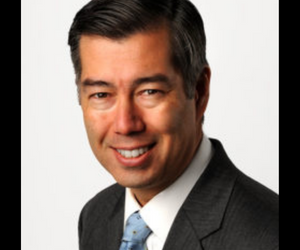The World’s Reference Library for Minerals
What is the most widely viewed museum object in the world?
The answer is, the Smithsonian’s Hope Diamond.
If you’re one of the roughly 30 million people who will be visiting the Smithsonian Institution in Washington, D.C. during the Institution’s 150th Anniversary celebration, be sure to see the Hope Diamond. It’s located on the second floor of the National Museum of Natural History.
When you see the Hope Diamond, you’re looking at one of the rarest and most precious gems on earth. If no one has prepared you for it, you’d probably expect a large, sparkling colorless stone. True, the Hope Diamond is large but the diamond itself is a glittering violet-blue. There’s a radiance to it so lovely that you can understand why kings, like Louis XIV of France and George IV of England, treasured the gem.
The Hope Diamond is just one small part of the Smithsonian’s gem and mineral collection. Since the Smithsonian’s mission is “the increase and diffusion of knowledge,” there’s more to the Smithsonian’s collection than just this astonishingly beautiful gem.
The Hope Diamond is actually a mineral, and behind the scenes at the Smithsonian is the world’s preeminent mineral collection. The collection includes samples of each of the world’s more than 4000 known minerals. Minerals often come in different forms, so there are samples of many known varieties of the individual minerals.
The World’s Reference Library for Minerals
The scale of the collection is impressive. To visualize the museum’s collection of just one of these minerals, quartz , imagine a drawer from your dresser. Then imagine that your dresser is 18 drawers high and 7 drawers wide. Each of those drawers might contain 20 to 50 different varieties of quartz.
The collection contains, to the best of our current knowledge, all the varieties of quartz from the entire world. The collection is available to scholars from throughout the world. It is, in the words of Randall Kremer, a Smithsonian spokesman, “The World’s Reference Library for Minerals.”
Scholars can borrow samples or can request minute shavings for study and experimentation.
The minerals are available at no charge, but the Smithsonian nevertheless gets something priceless in return. Each scholar or scientist who uses Smithsonian specimens is asked to share their results with the Smithsonian. In this way, the Smithsonian has become one of the world’s most outstanding repositories of information on minerals
It’s a good deal for the Smithsonian and for this country as well because it means an ever-expanding knowledge base about minerals. The implications of this are almost beyond imagination. To get a glimpse of the importance of minerals, look at a city skyline, and consider that most of the raw materials for all the buildings you see come from minerals. Whether it’s the steel in the girders, or the silicon in the glass windows, or the cement foundations, it’s minerals that make up the buildings.
Or think of an automobile. Almost everything in it, from the iron and steel and aluminum in the body, to the tungsten in the headlights or the copper in the wiring, comes from minerals. Minerals are a basic natural resource and the more we know about them, the more wisely we can use them.
The Hope Diamond may be the showiest of the minerals, but in the view of Linda Welzenbach, one of the Smithsonian’s geologists, “all minerals matter.”
Search Blogs
Latest Posts
Russia’s Ugly Prisoner Exchanges
https://mitziperdue.com/russias-ugly-prisoner-exchanges Boris Semenov, (not his real name) from Bucha, Ukraine had an experience at the hands of the Russian invaders that’s so foreign to us in the West that’s it’s hard for us to process. Still, his story is worth...
Russian Invaders Always Attack Police
When soldiers from the Russian Federation invade a country, a top priority is to incapacitate the local police. The Russians systematically bomb police stations, destroy police communications, and either steal or disable police cars. They’ve done this in each of the 12 wars they’ve been involved with since the Russian Federation was formed in in 1991. (Source)
Russia’s Unusual New Method Of Attack: Fake Bomb Threats
https://www.fairobserver.com/russian-newsrussia-news/russias-unusual-new-method-of-attack-fake-bomb-threats/ Publication – fairobserver.com
The Russian Occupation: a Ukrainian Political Prisoner’s Ordeal
https://townhall.com/columnists/mitzi-perdue/2024/04/06/the-russian-occupation-a-ukrainian-political-prisoners-ordeal-n2637446 Publication – townhall.com
Subscribe to Updates
About Author

Mitzi Perdue is the widow of the poultry magnate, Frank Perdue. She’s the author of How To Make Your Family Business Last and 52 Tips to Combat Human Trafficking. Contact her at www.MitziPerdue.com
All Articles
An Economic Time Bomb for Life Insurance Owners
An Economic Time Bomb for Life Insurance Owners View ArticleSearch ArticlesLatest ArticlesSubscribe to UpdatesAbout AuthorMitzi Perdue is the widow of the poultry magnate, Frank Perdue. She’s the author of How To Make Your Family Business Last and 52 Tips to Combat...
A System for Finding Family Business Blind Spots
A System for Finding Family Business Blind SpotsThe Rosy Periwinkle The rosy periwinkle doesn’t look like a plant that’s worth $200 million a year. Except that its flowers are pink, it resembles the blue periwinkle commonly used as ground cover. To the desperate...
My Favorite Post for This Year! Carmen, the Beautiful Carmen
My Favorite Post for This Year! Carmen, the Beautiful CarmenFor a peek inside the fecund mind of legendary hedge fund manager Roy Niederhoffer, come take a look at his analysis of the opera Carmen. Guaranteed, you’ll never before have seen such an original take on the...
A New Way to Engage Next Gens in the Family Business
A New Way to Engage Next Gens in the Family BusinessWhat if Facebook met LinkedIn and decided to have a Family Business baby? In Esrock’s view, people in family businesses have a need for the kinds of information and encouragement that are unique to members of family...
A Not-Secret Sauce for Investing
A Not-Secret Sauce for InvestingYou would think that doing business in Brazil would be an above-average risk proposition, right? Well maybe. But Matthew Wilkens has seen a truly impressive not-so-secret sauce that creates a spectacular exception. Even better, since...
Is the Stock Market Long-in-the-Tooth?
Is the Stock Market Long-in-the-Tooth?Is the current market long-in-the-tooth? Should you pull back because it’s unreasonable to expect the market to keep on reaching new highs? “Not necessarily,” answers Eric Uchida Henderson, CFA and Chief Investment Officer of...





